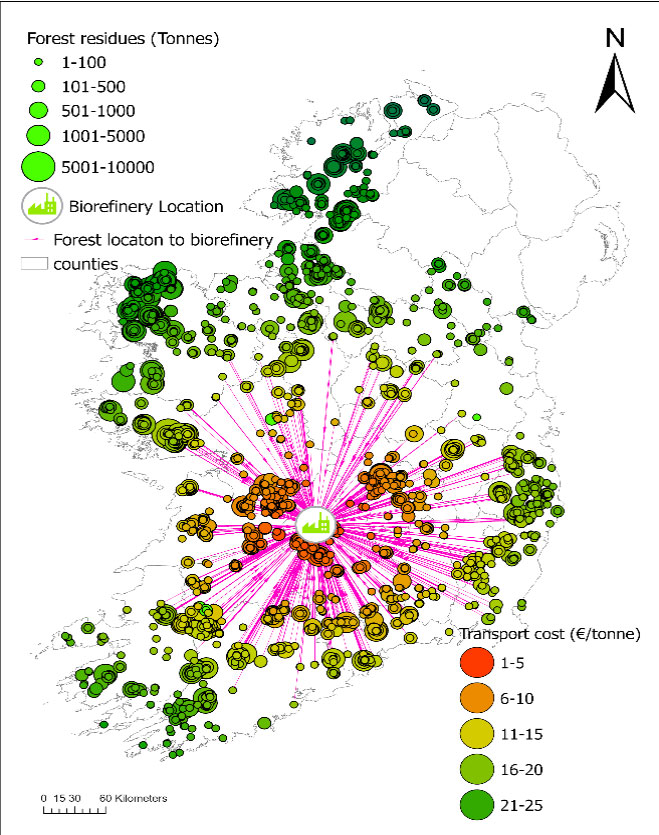Environmental sustainability studies of biohub archetypes
Download the full report Environmental sustainability studies of biohub archetypes
Biohubs are increasingly seen as essential to the cost-effective deployment of bioenergy at scale for decarbonising hard-to-abate sectors like heavy-duty vehicles and heat. The term biohub refers to an intermediate place where farmers/growers can deliver their by-products such as straw and residues to be processed into products that have higher quality and value along the supply chain. Biohubs are increasingly becoming key enablers for the cost-effective and efficient mobilization of waste bioresources such as agricultural and forest residues. As biohubs move from concept to reality, there is a need to develop a systematic approach to assess their environmental impact.
This report presents results of environmental sustainability analysis for three sample biohub archetypes:
- Biohub-1 converts post-harvest agricultural residues such as cereal and soy straw in Croatia to solid fuel pellets for remote domestic heating.
- Biohub-2 converts forest residue in Ireland via a gasification pathway to bio-CNG to fuel Irish timber truck fleets.
- Biohub-3 converts forest residue, also in Ireland, via pyrolysis to crude bio-oil which is co-processed in an oil refinery to produce lower-carbon diesel.
Global warming impact relative to reference cases for the provision of remote domestic heat (coal), and truck fuel (diesel) was calculated for the biohubs using standard life cycle assessment methods. The functional unit was set to 1 GJ of agri-pellets or bio-CNG or crude bio-oil.
Greenhouse gas emissions reductions of 62% for biohub-3 and over 90% for biohubs 1 and 2 were calculated. Lower reductions were found for biohub-3 because only a portion of crude oil was displaced by bio-oil due to limitations on the existing oil refinery equipment. Upgrading the refinery infrastructure would enable higher bio-oil fraction and therefore greater emission reductions, but at greater economic cost. Soil carbon credits associated with the use of by-product biochar are responsible for some of the emissions reductions seen in biohub-3. Biohubs 1 and 2 completely displace fossil fuel use and therefore larger emissions reductions were observed. The findings bolster the case for the use of biohubs as part of comprehensive decarbonisation strategies in agricultural and forestry regions.



